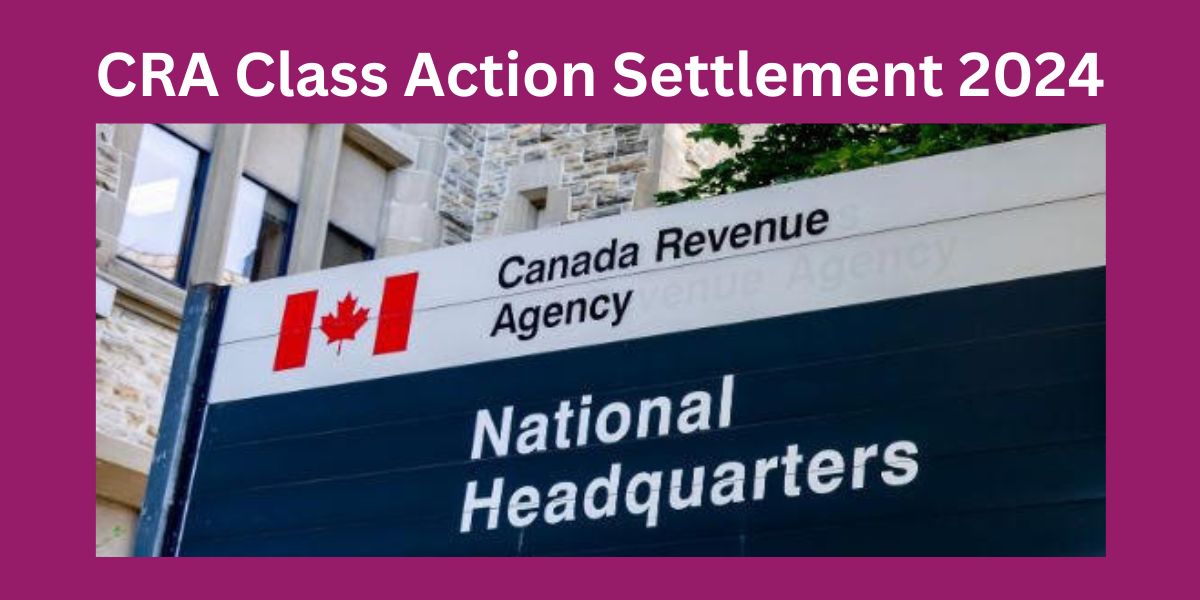If you’ve recently received a notice from the Canada Revenue Agency (CRA), you might be wondering, “What’s going on? Why am I being contacted by the CRA out of the blue?” You’re not alone. Thousands of Canadians are in the same boat, and it’s all tied to the CRA Class Action Settlement in 2024. Let’s dive into what this settlement is all about, who’s receiving these notices, and what you should do if one lands in your mailbox.
Understanding the CRA Class Action Settlement
What Is a Class Action Settlement?
A class action settlement is a legal resolution involving a group of people who’ve all suffered a similar wrong or injury. Instead of each person filing their own lawsuit, they band together as a class to bring a collective case against the defendant—in this case, the CRA.
Why Is the CRA Involved in a Class Action?
The CRA found itself embroiled in this class action lawsuit due to a significant issue related to how they managed certain personal information. Back in [insert relevant year or time period], it was discovered that the CRA had [describe the issue—perhaps a data breach, mismanagement of personal information, or another legal violation]. This led to widespread concern among Canadians, many of whom felt their rights had been violated.
The Settlement Agreement
Fast forward to 2024, and a settlement has finally been reached. The CRA agreed to compensate those affected, without admitting any wrongdoing, to avoid a lengthy and expensive trial. The details of the settlement include financial compensation, credit monitoring services, and other measures to prevent similar issues in the future.
Who Is Receiving the CRA Notice?
Are You Affected?
First things first, not everyone is going to receive a notice from the CRA regarding this settlement. The notices are being sent to specific individuals who were directly impacted by the issue at the heart of the class action lawsuit. If you haven’t received one, it likely means your personal information wasn’t part of the breach or mismanagement.
How Are Recipients Chosen?
The CRA used a detailed process to identify affected individuals. This involved going through their records and pinpointing those whose information was involved in the issue. If your data was among those compromised, a notice should have been sent to you explaining the situation.
What Does the Notice Look Like?
If you’re wondering what to look for in your mail, the notice from the CRA will be official, bearing their logo and contact information. It will outline the details of the class action settlement, how you were affected, and what steps you need to take next. Be wary of any fraudulent letters pretending to be from the CRA—these often have spelling errors or ask for personal information that the CRA would never request by mail.
What to Do If You Receive the CRA Notice
Don’t Panic!
Receiving a notice from the CRA can be stressful, but it’s important not to panic. The notice is just the first step in a process designed to compensate you for any inconvenience or harm caused by the CRA’s actions. Take a deep breath and read the notice carefully.
Read the Notice Thoroughly
It might be tempting to skim through the letter, but this is one piece of mail you’ll want to read carefully. The notice will contain important information about the settlement, including how you were affected, what compensation you’re entitled to, and what you need to do to claim it.
Verify Its Authenticity
Before taking any action, make sure the notice you received is legitimate. The CRA has a lot of information on their official website about the settlement, so cross-check details there. If you’re still unsure, you can contact the CRA directly using the contact information provided on their official website—not the contact details in the letter, just to be safe.
Follow the Instructions Provided
The notice will outline specific steps you need to take. This might include filling out forms, providing certain documents, or logging into a secure CRA portal to confirm your details. Make sure to follow these instructions to the letter to ensure you receive the compensation you’re entitled to.
What Compensation Can You Expect?
Financial Compensation
One of the primary forms of compensation in this settlement is financial. The exact amount you’ll receive depends on how severely you were affected by the issue. The notice should outline the compensation structure and what you can expect to receive.
Credit Monitoring Services
In addition to financial compensation, the CRA is offering credit monitoring services to those affected. This service will keep an eye on your credit report and alert you to any suspicious activity, helping you protect your financial health moving forward.
Additional Protective Measures
The CRA is also implementing new security measures to prevent similar issues in the future. While this doesn’t directly impact you, it’s a step towards rebuilding trust and ensuring your information is safer with them moving forward.
What If You Don’t Receive the CRA Notice?
Should You Be Worried?
If you haven’t received a notice, don’t worry just yet. It could be that your information wasn’t affected, or the notice is still on its way. Remember, the CRA is only contacting those who were directly impacted.
How to Check Your Status
If you’re concerned that you should have received a notice but haven’t, you can contact the CRA directly. Use the contact information from their official website to inquire about your status in the settlement. They should be able to confirm whether your information was part of the issue.
Can You Still Join the Class Action?
If you believe you were affected but haven’t received a notice, you might still be able to join the class action. This process usually involves filing a claim with the court or with the organization handling the settlement. However, be sure to seek legal advice to understand your rights and the best course of action.
Key Deadlines to Remember
When to File Your Claim
The notice you received will outline important deadlines you need to meet. These could include deadlines for filing a claim, submitting documents, or opting out of the settlement if you choose to pursue legal action independently.
Don’t Miss the Deadline!
It’s crucial to mark these deadlines on your calendar. Missing a deadline could mean forfeiting your right to compensation. If you’re unsure about any of the dates, reach out to the CRA or the legal firm handling the settlement for clarification.
Legal Help and Resources
Do You Need a Lawyer?
While the process is designed to be straightforward, you might feel more comfortable seeking legal advice, especially if you have questions about your rights or the settlement process. Many law firms offer free consultations, so don’t hesitate to reach out if you need help.
Where to Find Help
Aside from private legal firms, there are numerous resources available online. Websites dedicated to the class action settlement will often provide FAQs, step-by-step guides, and contact information for further assistance.
The Impact of the Settlement on the CRA
Rebuilding Trust
The CRA’s involvement in this class action settlement has undoubtedly shaken the trust of many Canadians. However, the agency is taking steps to rebuild that trust through compensation and enhanced security measures.
Long-Term Changes
Beyond the immediate settlement, this situation has prompted the CRA to review and improve how they handle personal information. While it’s unfortunate that it took a class action lawsuit to bring about these changes, the long-term impact should lead to better practices and stronger data protection.
How to Protect Yourself in the Future
Stay Informed
One of the best ways to protect yourself is to stay informed about how your information is being used. Regularly check your credit report, monitor your financial accounts, and be wary of any suspicious activity.
Be Cautious with Personal Information
It’s also crucial to be cautious about where and how you share your personal information. Ensure you’re only providing details to trusted sources, and consider using additional security measures like two-factor authentication where possible.
What to Do If You Suspect a Breach
If you ever suspect that your personal information has been compromised, act quickly. Contact your financial institutions, report the breach to relevant authorities, and take steps to secure your information. The sooner you act, the better you can mitigate potential damage.
ConclCRA Class Action Settlement 2024usion
The CRA Class Action Settlement of 2024 is a significant event, affecting thousands of Canadians. If you’ve received a notice, it’s important to stay calm, understand your rights, and follow the steps outlined to receive your compensation. For those who haven’t received a notice, staying informed and cautious is key to protecting your personal information in the future. While this settlement marks the end of a troubling chapter, it also opens the door to improved security measures and a stronger, more trustworthy CRA.
FAQs
1. What should I do if I lose my CRA notice?
If you lose your CRA notice, contact the CRA directly using their official contact information. They can resend the notice or guide you on the next steps.
2. Can I opt out of the CRA Class Action Settlement?
Yes, most class action settlements allow you to opt out if you prefer to pursue legal action independently. Check the notice for specific instructions on how to opt out.
3. What happens if I miss the deadline to file a claim?
Missing the deadline usually means forfeiting your right to any compensation under the settlement. If you’re close to the deadline, reach out to the CRA or the settlement administrator for advice.
4. Is the compensation taxable?
Typically, compensation from a class action settlement is not taxable, but it’s always a good idea to consult with a tax professional to understand how it applies to your situation.
5. Will the CRA improve its data protection practices?
Yes, the CRA has committed to improving its data protection practices as part of the settlement agreement. This includes implementing new security measures to prevent future breaches.










